Bronwyn Waters - Director of Early Learning
 As the end of the year is fast approaching and we begin preparing for the next, whether it's their first day of Prep or their transition into Year 10, each stage brings new experiences and challenges. During these times of change, it’s important to remember that children, just like adults, can experience worries, fears, and uncertainties. Supporting them through these transitions starts with open, honest communication and a strong partnership between families, Early Learning Centres, classroom teachers, and Allied Health teams.
As the end of the year is fast approaching and we begin preparing for the next, whether it's their first day of Prep or their transition into Year 10, each stage brings new experiences and challenges. During these times of change, it’s important to remember that children, just like adults, can experience worries, fears, and uncertainties. Supporting them through these transitions starts with open, honest communication and a strong partnership between families, Early Learning Centres, classroom teachers, and Allied Health teams.
The Power of Positivity
As a parent, your attitude toward these changes plays a significant role in how your child approaches them. Children pick up on our cues, and when we express confidence and positivity about the future, they are more likely to mirror these emotions. While it’s natural to feel a little anxious, especially when things are uncertain, it’s essential to model resilience and flexibility. Let your child know that it's okay not to have all the answers, and that learning to navigate the unknown is part of growing up.
For example, you can say, "I’m not sure exactly what next year will look like, but I know you’re going to learn new things and have fun just like you did this year." This approach reassures your child that change, while challenging, is also a time for growth.
Acknowledging Worries and Fears
While being positive is crucial, it’s equally important to acknowledge your child’s feelings of worry or fear. Change can be overwhelming, and it’s perfectly normal for children to feel unsure about what lies ahead. By creating a safe space for them to share their emotions, you help them process their feelings in a healthy way. Let them know that it’s okay to feel nervous and that you’re there to support them through it.
By simply acknowledging their feelings, you offer your child comfort. Saying something like, "I understand you might feel worried about starting Year 1, and that's okay. It’s normal to feel unsure about new things, but we’ll figure it out together," can help validate their emotions and reassure them that they are not alone.
Open Communication with Teachers and Educators
One of the most effective ways to ensure a smooth transition is to maintain open communication with your child’s educators. We are here to support not only the students but also your family. Sharing your child's strengths, challenges, and any concerns helps our educators understand how best to support your child from the beginning of the school year or transition to care.
Establishing a trusting relationship with the teacher/educator also models positive communication for your child. It shows your child that we work collaboratively as team. Encourage your child to talk about what excites them and what makes them feel nervous. Sharing this information with their future teacher ensures that the classroom environment can be tailored to meet your child’s needs from the outset.
Bronfenbrenner’s Ecological Systems Theory: The Importance of a Support Network
To truly support a child during times of transition, we must look at the larger picture. Bronfenbrenner’s ecological systems theory reminds us that children do not develop in isolation. They are part of a network that includes family, school, and the broader community, all of which work together to influence their growth and development.
This theory highlights how important it is for everyone in a child’s life to work in partnership. In some cases, this support system may also include Allied Health professionals, such as speech therapists, psychologists, or occupational therapists, who can provide specialised help to children who may experience heightened anxiety or need assistance with emotional regulation. When families, teachers/educators, and health professionals collaborate, they form a strong safety network for the child, ensuring that their transition is not only academically smooth but also emotionally supported when educators/teachers are working together, it reinforces a sense of safety and security.
Making Three Wishes Together
A practical and heartfelt way to support your child in preparing for the next school year is to sit down and make ‘three wishes’ together. Ask your child what they hope for the upcoming year—what they’re excited about, what they hope will happen, and what they wish for in their new classroom or learning environment. These wishes can help frame the transition in a positive light, giving your child something to look forward to.
During difficult times, revisit these wishes with your child to remind them of the hopeful and exciting things they are looking forward to. It’s a simple but powerful tool to refocus their mindset when worries arise.
Moving Forward Together
Transitions can be challenging, but with open communication, strong partnerships, and a supportive team, children can approach these changes with confidence and a sense of security. By acknowledging their concerns and working together with educators, Early Learning Centres, and health professionals, we can help ensure that every child feels heard, supported, and ready to embrace the new school year ahead. As we head into the season of transition stay positive and enjoy the journey.
Bronwyn Waters
Director of Early Learning





